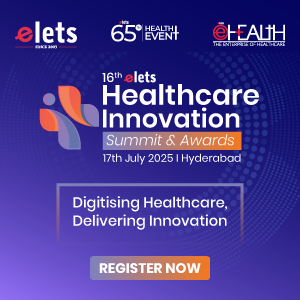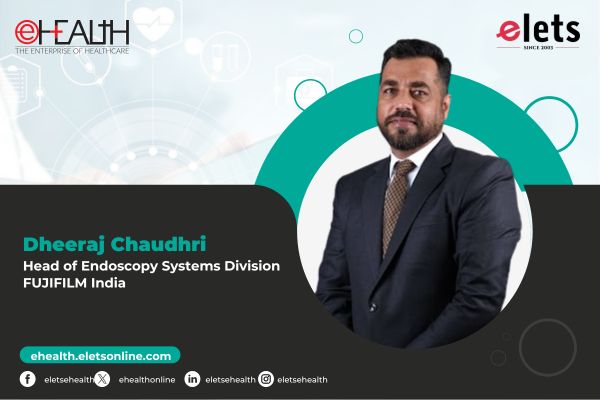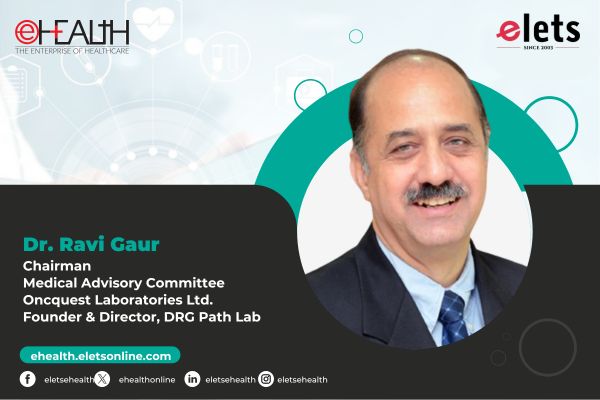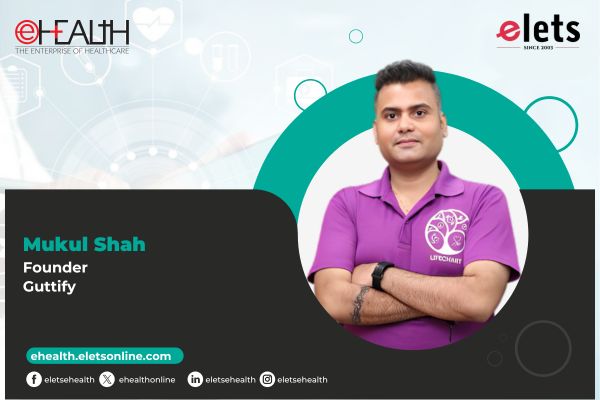
It perhaps needs no reiteration that blood is foundational base to modern healthcare – it has neither an equivalent nor an alternative. In India, however, establishing a safe, adequate and sustainable blood supply has been a persistent challenge, be it due to acute shortage, growing wastage, transmission of infections, or reliance on old methods etc.
These issues have only been marginally mitigated by the already applied bucket of technological solutions. Advanced bar-coding, for instance, can improve sample identification and reduce the possibility of faulty cross-matching, but it cannot determine where the blood unit should go or whether it should go as a whole or broken into its components. That needs intelligence, human or artificial.

Globally, the conversation about AI and other emerging technologies in blood systems is nascent at best. In India, they are mostly non-existent. However, as India leapfrogs into digital health with the impending launch of the final National Digital Health Blueprint (NDHB), the architecture for the digital health ecosystem, India also needs forethought into how it will channelize a digital system towards improved outcomes in specific health sub-systems that need an immediate overhaul.

There are many pathways for an emerging tech disruption in blood transfusion, but they could be more or less classified into two categories of use-cases – ones that get the donor to the point of transfusion and those that ensure that donated blood is kept safe and applied optimally. Presently, both are solely being driven by the private sector or smaller pilots by foreign governments.

Getting the right donors at the right time to the blood bank

Kickstarting reform of the blood system requires a maximum emphasis on bridging the gap between demand and supply of blood, which stands at roughly 15 million units, through voluntary donor recruitment and engagement. This requires using machine learning models to mine out the ‘most likely’ donors as well as approaching them using highly individualized messages.
Facebook has been able to gather 35 million donors globally using a Natural Language Processing (NLP) tool that can recognize when the content of a social media post is related to donating blood and approaching them with a message to hop on to this feature. After generating a pool of potential donors, it uses simple algorithms to notify nearby donors whenever a health facility posts about the need for blood in a particular area.
This can be elevated further by combining effective donor engagement with AI-powered CRM and inventory management to continuously monitor blood supply levels and sending automatic notifications when a certain component or blood type falls below the minimum level can substantially reduce wasteful collection and promote optimizing of inventories. These tools can be trained further for increased functionality like stocking up on universal blood types in the face of an impending natural disaster.
The basic problem is that demand forecasts are rarely prepared in India. The National AIDS Control Organisation (NACO) released a blood demand estimation for the first time in March, 2018. The irony is that it was estimating the demand for blood units in 2017. Naturally, it barely came in handy apart from the fact that it describes the methodology to predict blood for any geographic area or a health facility using population or beds as the base.
Ideally, the simplest way for the government to develop estimation tools for blood banks is to use these simple statistical prediction models as the starting point for machine learning. Unlike the popular conception, ML models don’t need massive sets of data – clinical models are often used as starting points. As more data is fed in, the algorithm learns and refines the prediction model for more accurate estimations at the national level all the way to the individual blood bank level.
All this can be housed in NACO’s IT solution, eRaktkosh, which till now runs as a basic MIS for solving informational gaps in stock availability and donation camps. Powering eRaktkosh to take donor data from these companies and carry out notification and engagement functions on its own is the normative goal. In the spirit of the ‘silos to ecosystems’ approach espoused in the NDHB, this means building upon the work that Facebook and other start-ups with similar AI-tools have already done in creating a donor registry (giving special emphasis to rare blood group donors).
This requires figuring out models to collaborate with private companies for data sharing and building up internal capacity to develop NLP-chatbots. Data privacy, which is usually a major concern, might not be an obstacle since data is being taken from private companies (as against being given to them). Moreover, as most donors sign up voluntarily to donate and thereby might be more receptive to agreeing to be part of national registries – facilitated by a consent manager.
Post-Transfusion Blood Stewardship
Big Data and AI applications can help ensure that blood is kept safe from contamination after collection and that it is applied in the most optimal manner. Contamination, faulty cross-matching and inadequate testing for transfusion transmitted infections are key challenges in the vein-to-vein safety. A transparent digital footprint can help reduce physician errors and allow specimen identification and tracking. Computer vision for reading bar-codes and spotting infections in collected blood is all applications being explored but are far from the proof of concept phase.
However, Big Data analytics now have proven efficacy in optimizing usage of blood. In the US, Premier Inc., a healthcare improvement alliance, using big data analytics for 645 facilities to spot patterns of blood use and identifying opportunities for reducing usage while maintaining patient outcomes. For instance, they noticed that orthopedic surgeries over-consume blood and worked with facilities to achieve a steep 75% drop in cases requiring transfusions. While extensive data analyses can spot opportunities, it is for the Union Ministry including ICMR and NBTC to develop and revamp medical guidelines on the effective use of blood.
Besides this, systems can also be trained to make decisions on whether to direct collected units for breaking into components or directly deliver as whole blood. Applications like these might not be developed by the government themselves, but a lack of clinical safety standards for such technological tools by the CDSCO unduly deters innovators away from the Indian public health system.
As building blocks of a digital health system are being developed and stacked, the government should also ensure different sub-systems are moving swiftly on their own journeys of technological reform. Blood could be a starting point, but it would require the government to be open to engaging with the industry, supported by a robust data sharing policy, investment in R&D and viability gaps, reoriented capacity building approach, and a regulatory framework with detailed IT and clinical standards. After all, the government shouldn’t act as a gatekeeper but a facilitator taking innovations into the public health system it largely owns – not only to select medical colleges but every rural blood centre.
(Disclaimer: Abhinav Verma is a lawyer, and public policy and design consultant, currently with the International Innovation Corps, University of Chicago. Views expressed are a personal opinion.)
Be a part of Elets Collaborative Initiatives. Join Us for Upcoming Events and explore business opportunities. Like us on Facebook , connect with us on LinkedIn and follow us on Twitter , Instagram.
"Exciting news! Elets technomedia is now on WhatsApp Channels Subscribe today by clicking the link and stay updated with the latest insights!" Click here!
















